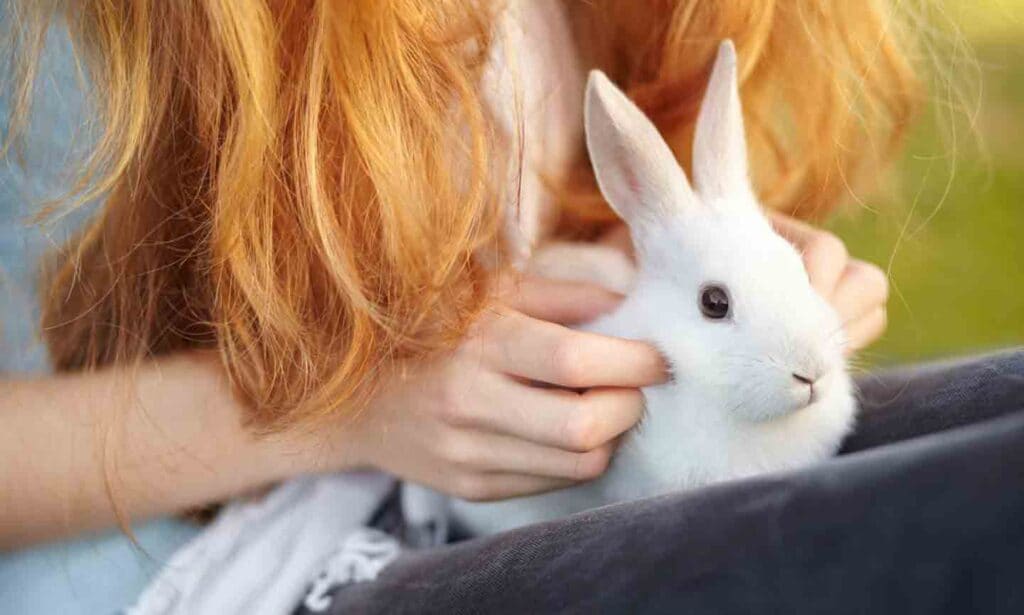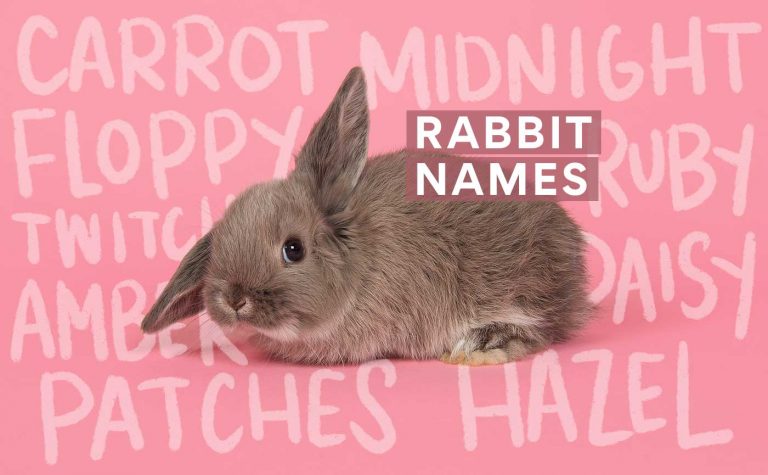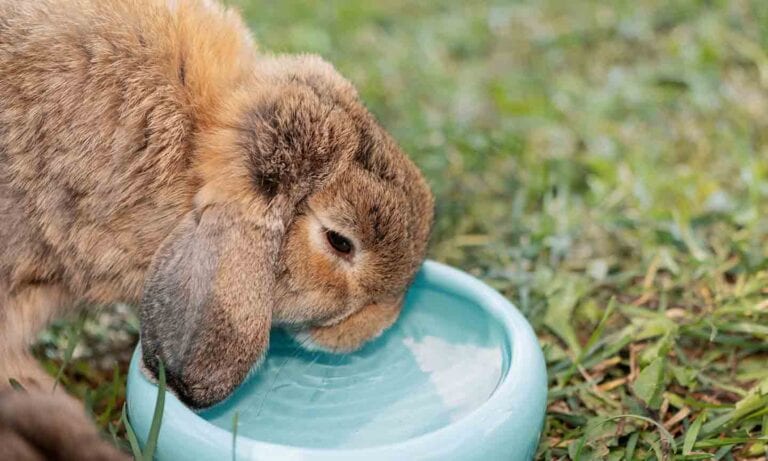Who doesn’t want to pet a rabbit? Fluffy, floppy and oh-so-soft, bunnies are the very definition of cute.
However, before you reach out for your house rabbit’s irresistible velvety ears, it’s important to know how to pet a rabbit the right way. While these small animals might seem designed for you to cuddle, rabbits are intelligent, sensitive companions who must be handled with care and caution.
“Rabbits are so cute that people just impose themselves on them,” says Thea Harting, aka the Badass Bunny Rescuer, a Brooklyn, New York–based rabbit behavior consultant and member of the International Association of Animal Behavior Consultants. “But it’s important to listen to your rabbit.”
Read on to find out everything you need to know about petting a rabbit.
In This Guide:
How to Pet a Rabbit: Step-By-Step Instructions
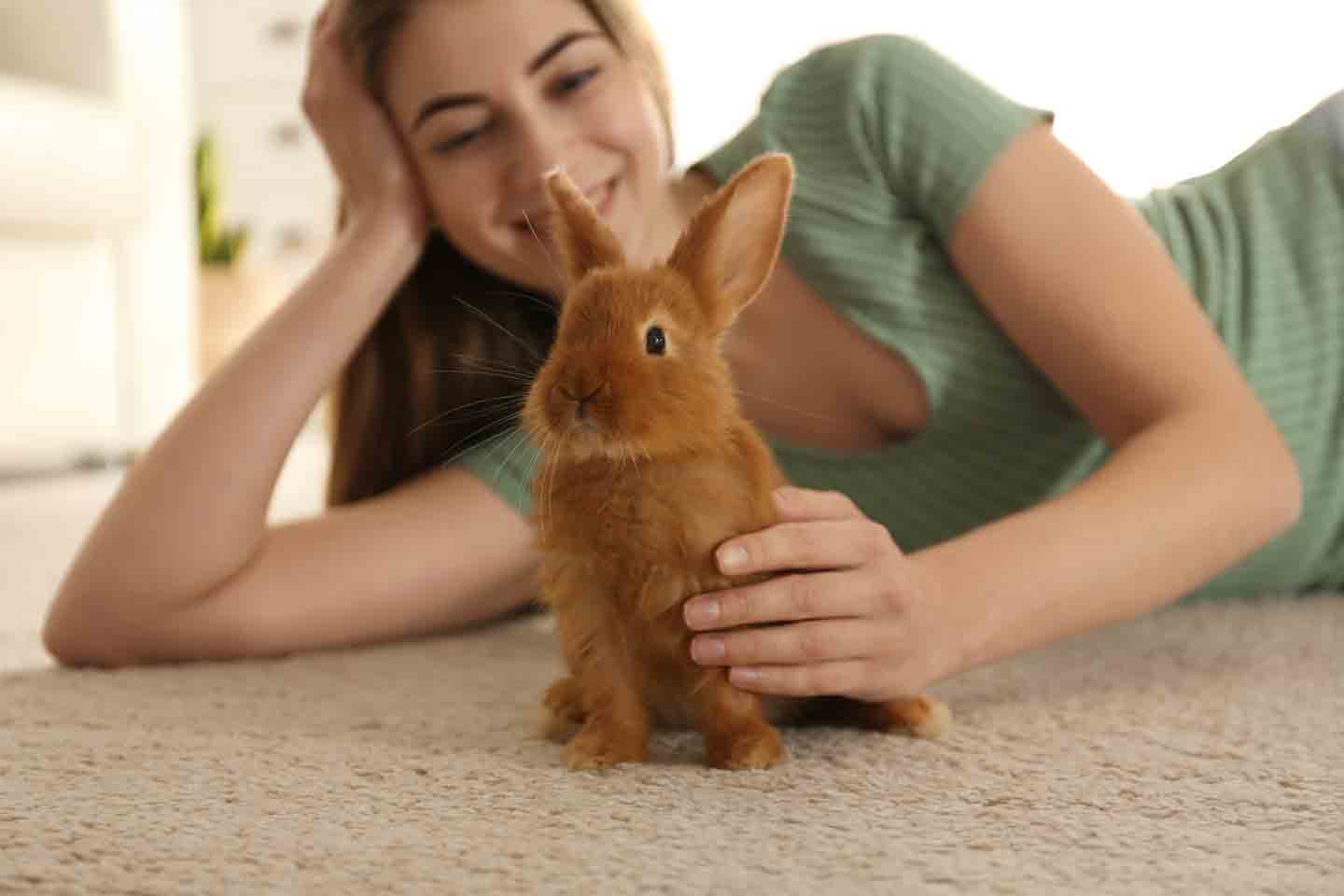
Petting a rabbit is a slow and steady process. Below, Harting—who teaches low-stress handling techniques with a priority on rabbit choice and control—offers these step-by-step instructions for first-time encounters.
1 Sit Down on the Floor
Harting refers to this first step as the “consent test.” “It’s all about … letting the rabbit have control of the interaction,” she says.
Rabbits don’t generally enjoy being picked up, so ideally, you’ll want to avoid beginning the interaction by handling your rabbit. Instead, if your rabbit is in their enclosure, ensure the door is open and they can exit safely on their own. “This is easiest with a puppy pen, since you can simply open the door, and the rabbit can hop out independently,” says Harting.
Next, sit down on the floor. “Let the rabbit approach you, sniff you and move around you,” Harting says. “Don’t immediately reach out and touch them.”
To help your rabbit feel secure and sure-footed, place a rug on the floor and make sure the path to you is carpeted. Additionally, it helps to set up your rabbit’s enclosure or safe space in a room where you enjoy spending time and interactions occur naturally, notes Harting.
2Offer an Introductory Pet
If the rabbit remains near you and seems interested, go ahead and offer a small, gentle pet. Rabbits have a blind spot in front of their face near the mouth, so reach your hand over top of their head, advises Harting.
What’s a good spot for an initial pet? “Pet them on the forehead, between their eyes, in the direction of the fur,” Harting recommends.
3Take a Break
Pause the petting and let the rabbit decide if they want to continue. “Pet a few strokes and wait for the response,” says Harting. “Rabbits vote with their feet. If they move towards you, that’s a yes. If they hop away, that’s a no—you have to stop petting.”
4Play It Cool
Even the most affectionate rabbits need space sometimes. If at any point the rabbit shows signs of stress—such as rapid breathing, tense muscles, bulging eyes, or trying to move away—it’s time to back off and build trust.
“Rabbits like people who respect them when they say no,” says Harting. “When rabbits trust that their ‘no’ will be respected, they’re more likely to say yes.”
Where Do Rabbits Like To Be Pet?
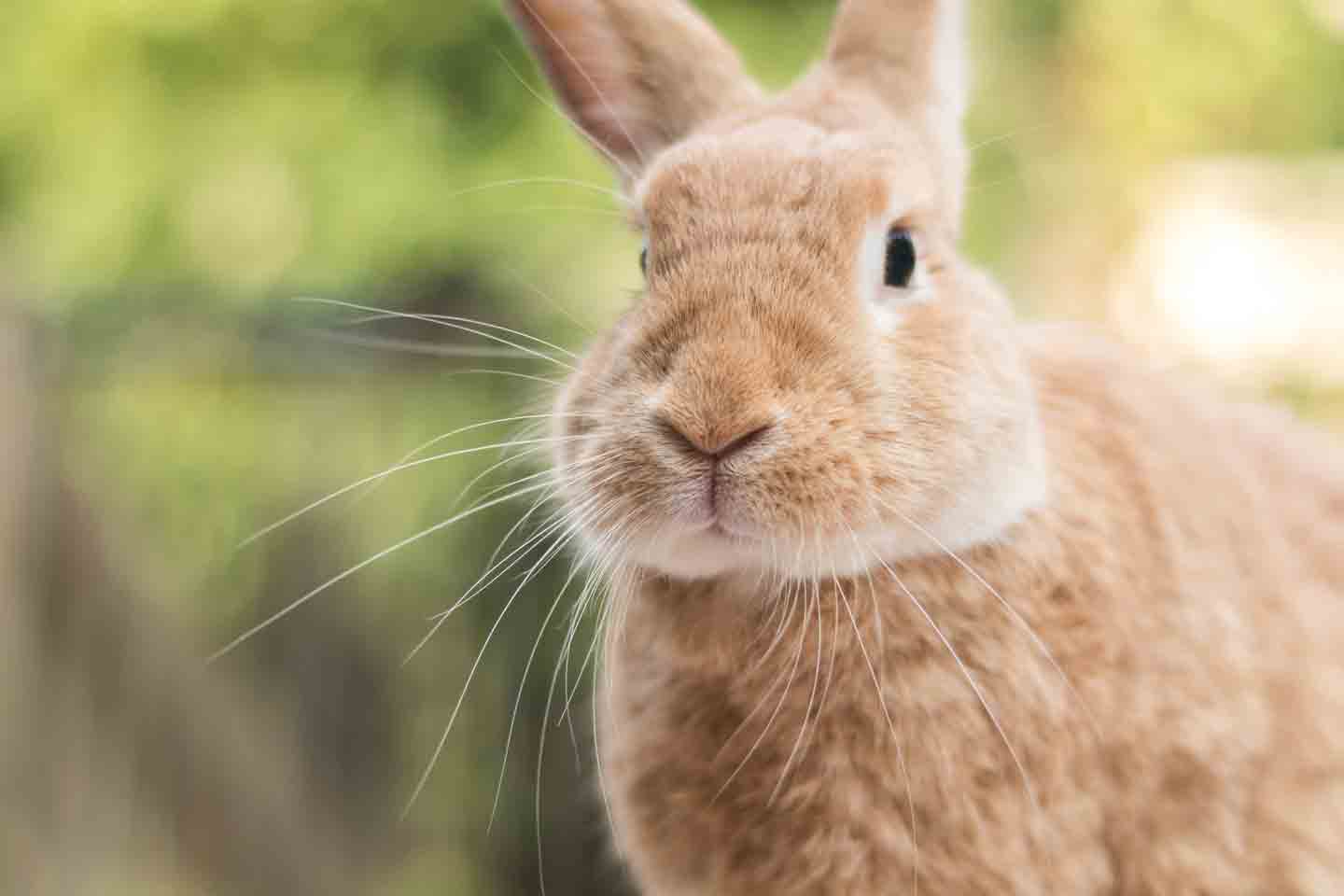
Every bunny is unique and has their own “favorite spot.” But in general, it’s best to offer pets on the forehead and behind the ears, says Harting. Be sure to avoid their blindspot (the space near their mouth in the front of their face) when reaching out your hand.
Always pet a rabbit when seated on the floor, she advises, and never squeeze your rabbit. “I advise not picking a rabbit up,” says Harting. “Rabbits feel most secure when all four feet are on the floor.”
Areas To Avoid When Petting a Rabbit
It’s important to avoid petting in places that make your lop-eared friend uncomfortable. Take special care to avoid the following areas, advises Harting:
- Belly: Even if your rabbit rolls over and exposes their belly, this is a sensitive area and is probably a no-go zone.
- Under the chin: Some rabbits tolerate having their cheeks pet, but under the chin is usually unwelcome.
- Feet: Swift feet are a rabbit’s best defense, so don’t compromise their ability to run away.
- Rear end: While pets on the back may be welcome, anything too close to the tail should be avoided.
- Full-body pets: Your cat might love them, but most rabbits will not tolerate a head-to-tail pet.
- Their blindspot: This is the space near their mouth in the front of their face.
Signs Your Rabbit Is Enjoying Your Petting
How do you know if your pets are well received? Rabbits can’t talk, per se, but they offer plenty of communication through their body language, says Kathryn Dench, VetMB, a veterinarian based in Chicago, Illinois, and veterinary consultant for the book “Pet Rabbit Care: An Ethical Guide to Confidently Care for Your Pet Rabbit.”
“Observing the rabbit’s body language while you’re petting them can offer cues to their comfort levels,” says Dench. “A relaxed posture, a soft grinding of the teeth, and closed eyes are indicators of a content rabbit.”
Does some bunny love you? Rabbits express affection in a number of ways, says Harting. “Some rabbits will ‘kiss’ or nuzzle,” she says. “When they lie down and kick their legs back, when they relax in your presence, when they follow you around, it’s an honor.”
More Tips for Petting Your Rabbit
Some bunnies are shy, but with patience and time many will learn to enjoy being petted. Consider the following additional tips for warming up your bun:
- Be patient. Like guinea pigs and other small pets, “rabbits are prey animals and may be initially cautious around new people,” says Dench. “Establishing trust takes time and patience.”
- Keep calm. “Ensure your hands are warm and your movements are gentle and predictable,” adds Dench. “Use a calm, quiet voice to soothe the rabbit as you pet them.” Loud noises will scare your rabbit, so turn off the TV and silence your phone to avoid unnecessary negative associations during your interactions.
- Build your bond. Remember that respecting your rabbit’s space is important for building trust and connection. “Proper petting is crucial, not just for the animal’s comfort, but for fostering a loving bond between pet and owner,” says Dench.
FAQs About Petting a Rabbit
Q:Why does my rabbit lie flat when I pet them?
A:When relaxed, many rabbits will lie flat on the floor with their front and hind legs extended and their chin on the floor, similar to a dog “splooting.” This is a sign that your rabbit is calm, happy and enjoying your petting. On the other hand, a rabbit lying in a tense, crouched position with flattened ears is showing signs of stress and should be left alone until they regain a sense of well-being.
Q:How do pet rabbits show affection?
A:Rabbits show affection through their body language. A relaxed posture, a soft grinding of the teeth and closed eyes are signs your rabbit enjoys being near you. Your rabbit may also follow you around the house, or move closer to you when in the same room.
In addition to being downright adorable, rabbits can make wonderful companions. Considering a bunny bestie? Hop on over to our Rabbit Adoption Guide for everything you need to know about welcoming a bunny into your home, from litter box training to vaccinations to bunny-proofing tips.
Wondering about your little bunny’s binky habit? Find out what it means.
Expert input provided by Thea Harting, aka the Badass Bunny Rescuer, a rabbit behavior consultant based in Brooklyn, New York; and Kathryn Dench, VetMB, a veterinarian based in Chicago, Illinois, and veterinary consultant for the book “Pet Rabbit Care: An Ethical Guide to Confidently Care for Your Pet Rabbit.”
More Rabbit Tips
Share:
